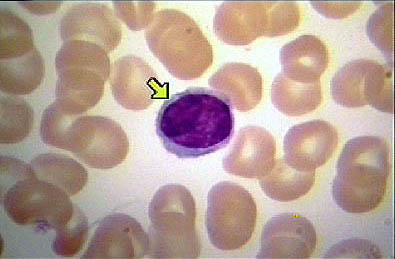- What is Waldenstrom’s Macroglobulinemia
- Statistics on Waldenstrom’s Macroglobulinemia
- Risk Factors for Waldenstrom’s Macroglobulinemia
- Progression of Waldenstrom’s Macroglobulinemia
- Symptoms of Waldenstrom’s Macroglobulinemia
- Clinical Examination of Waldenstrom’s Macroglobulinemia
- How is Waldenstrom’s Macroglobulinemia Diagnosed?
- Prognosis of Waldenstrom’s Macroglobulinemia
- How is Waldenstrom’s Macroglobulinemia Treated?
- Waldenstrom’s Macroglobulinemia References
What is Waldenstrom’s Macroglobulinemia
Waldenstrom’s Macroglobulinemia is a cancer of the B lymphocytes (a type of white blood cell) which causes overproduction of monoclonal macroglobulin (IgMantibody). B-lymphocytes play a vital role in the body’s specific immune system. B-cells mature into plasma cells and are responsible for the production of antibodies, which primarily play a role in bacterial infections.

Statistics on Waldenstrom’s Macroglobulinemia
WM is a relatively rare condition, accounting for approximately 2% of haematological malignancies. Age-standardized rates per the National Cancer Institute’s Surveillance, Epidemiology, and End Results (SEER) data are, for caucasian men, 0.61 cases per 100,000 population; caucasian women, 0.25 cases per 100,000 population; African American women, 0.36 cases per 100,000 population; and African American men, no cases reported. Also, the incidence rate rises sharply with age. The disease occurs in 5 out of 100,000 people over 50 years old.
Risk Factors for Waldenstrom’s Macroglobulinemia
The cause of this disease is unknown. It is characterised by overproduction of IgM, which causes the blood to become too thick (hyperviscosity). This hyperviscosity interferes with blood flow through small blood vessels, which leads to many of the symptoms of the disease.
Progression of Waldenstrom’s Macroglobulinemia
WM is a chronic disease and will eventually result in death.
How is Waldenstrom’s Macroglobulinemia Diagnosed?
- FBC (full blood count) shows low red blood cell count and platelet count.
- ESR (Erythrocyte Sedimentation Rate) may be elevated.
- LDH (Lactate Dehydrogenase) and ALP may be raised and indicate serious illness.
- Uric acid levels may be elevated.
- Calcium levels may be raised.
- Serum protein electrophoresis shows a monoclonal spike (increased amount of a monoclonal protein). This may be seen as a serum immunoelectrophoresis that shows an IgM spike or a serum immunofixation that shows an IgM spike.
- Urine immunoelectrophoresis shows IgM and a urine test for urine Bence-Jones proteins (quantitative) may be positive.
Prognosis of Waldenstrom’s Macroglobulinemia
The median (average) survival is about 5 years. In some people, the disorder may be chronic with few symptoms and slow progression.
How is Waldenstrom’s Macroglobulinemia Treated?
In patients with WM who are stable and asymptomatic, careful monitoring may be all that is needed. In patients who do require treatment there are several diffferent types of treatment. These include plasmapheresis, high-dose chemotherapy, splenectomy, and other medications. Plasmapheresis (plasma exchange) is a procedure for removing unwanted substances from the blood. In macroglobulinemia, it is used to control the symptoms caused by hyperviscosity by removing or reducing the high concentration of IgM. Blood is withdrawn from the person in the same way as for a blood donation, and the blood is passed through a cell separator that removes the plasma (the fluid portion, which contains the antibodies). The formed elements (blood cells) are reconstituted with a plasma substitute or with donated plasma. The reconstituted blood is then returned to the body as in a blood transfusion. This is an acute procedure designed to quickly control symptoms. Anaemia (deficient number of red blood cells), leukopenia (deficient number of white blood cells) and thrombocytopenia (deficient number of platelets) in the later stages of the disease may require the use of packed red cell transfusions, antibiotics, or platelet transfusions. A splenectomy (an operation to remove the spleen) may be effective in cases where chemotherapy has failed.
Waldenstrom’s Macroglobulinemia References
- eMedicine
- Fridrik MA, Jager G, Baldinger C, et al: First-line treatment of Waldenstrom’s disease with cladribine. Arbeitsgemeinschaft Medikamentose Tumortherapie. Ann Hematol 1997 Jan; 74(1): 7-10
- McCallister BD, Bayrd ED, Harrison EG: Primary macroglobulinemia. Am J Med 1967; 43: 394.
- Medline Plus
All content and media on the HealthEngine Blog is created and published online for informational purposes only. It is not intended to be a substitute for professional medical advice and should not be relied on as health or personal advice. Always seek the guidance of your doctor or other qualified health professional with any questions you may have regarding your health or a medical condition. Never disregard the advice of a medical professional, or delay in seeking it because of something you have read on this Website. If you think you may have a medical emergency, call your doctor, go to the nearest hospital emergency department, or call the emergency services immediately.







